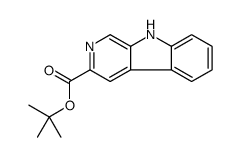Bidirectional effects of benzodiazepine binding site ligands on active avoidance acquisition and retention: differential antagonism by flumazenil and beta-CCt.
Miroslav M Savić, Dragan I Obradović, Nenad D Ugresić, James M Cook, P V V S Sarma, Dubravko R Bokonjić
Index: Psychopharmacology 180(3) , 455-65, (2005)
Full Text: HTML
Abstract
The pharmacological approach, using subtype selective ligands, complements genetic studies on the specific contribution of individual receptor subtypes to the various effects of benzodiazepines.The aim of this study was to examine the relative significance of alpha1-containing GABA(A) receptors in the effects of modulators at the benzodiazepine site on anxiety and memory processes.We tested the effects of the nonselective antagonist flumazenil, the preferential alpha1-subunit selective antagonist beta-carboline-3-carboxylate-t-butyl ester (beta-CCt), the nonselective agonist midazolam, the preferential alpha1-subunit selective agonist zolpidem, and the nonselective inverse agonist methyl 6,7-dimethoxy-4-ethyl-beta-carboline-3-carboxylate (DMCM) in a two-way active avoidance task in rats. The influence of flumazenil (10.0 mg/kg) and beta-CCt (30.0 mg/kg) on the effects of the two agonists were also examined. In the schedule 2 x 30 trials, drugs were administered i.p. 20 min before the training session. Avoidance responses in the training session are an anxiety-mediated behavior, whereas performance in the retention session relates to the effects on memory.Flumazenil and beta-CCt did not affect behavior. Midazolam (2.0 mg/kg) facilitated acquisition performance, while DMCM (1.0 and 2.0 mg/kg) induced the opposite effect. Flumazenil antagonized both effects. Beta-CCt potentiated the effect of midazolam, and partly antagonized the effect of DMCM. Midazolam (0.5 and 1.0 mg/kg) and zolpidem (1.0-3.0 mg/kg) impaired, while DMCM (0.1 mg/kg) facilitated the subjects' performance in the retention test. The amnesic effects were attenuated but not fully reversed, while the effect of DMCM was counteracted by both antagonists.The results indicate the alpha1-subunit interferes with the anxiolytic effect of a benzodiazepine site agonist and may contribute to the DMCM-induced anxiogenic effect. It is also substantially involved in the bidirectional memory processing in the active avoidance paradigm.
Related Compounds
| Structure | Name/CAS No. | Molecular Formula | Articles |
|---|---|---|---|
 |
tert-butyl beta-carboline-3-carboxylate
CAS:93835-05-3 |
C16H16N2O2 |
|
βCCT, an antagonist selective for α(1)GABA(A) receptors, rev...
2013-02-01 [Brain Res. Bull. 91 , 1-7, (2013)] |
|
Apparent pA2 values of benzodiazepine antagonists and partia...
1999-09-01 [J. Pharmacol. Exp. Ther. 290(3) , 1222-9, (1999)] |
|
Cognition-impairing effects of benzodiazepine-type drugs: ro...
2013-03-01 [Pharmacol. Biochem. Behav. 104 , 62-8, (2013)] |
|
The role of α1 and α5 subunit-containing GABAA receptors in ...
2012-04-01 [Behav. Pharmacol. 23(2) , 191-7, (2012)] |
|
Discriminative stimulus effects of L-838,417 (7-tert-butyl-3...
2010-02-01 [Neuropharmacology 58(2) , 357-64, (2010)] |